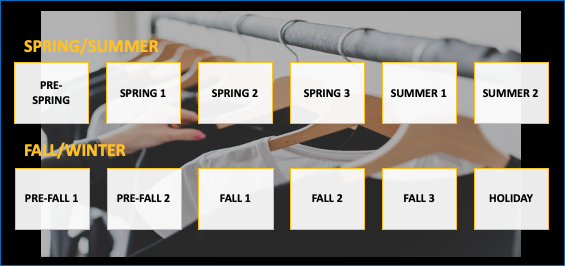Welcome to The Merchant Life, for retailers and retail enthusiasts wanting the insider perspective of all things retail.
Now let’s talk shop.
In this week’s newsletter, we follow our discussion from last week on merchant insights and move on to the Future of Merchandising.
As we dive into Merchandising of The Future, we focus on the role of the merchant and how they will become even more customer driven using data science.
What Does a Merchant Do?
Last week we talked merchandising with a few our merchant friends. Regardless of the model – mass market, off-price, luxury, small local shop, design-led, fast fashion, a department store, or a newly emerged DTC brand – each model requires a merchant.
The purpose of a merchant is the same.
Source, develop, buy and assort product for the customer. Serve up the best product range so that they stay engaged and shop more.
What happens to merchants when data is integrated more deeply into decision making and the way we buy product changes?
As the pandemic forced trade shows being cancelled and store closures, what does this mean for the future of the merchant?
The Future of Merchandising is evolution – from focusing less on using excel to plan buys to becoming an expert strategist on the customer.
Merchandising Today
Consider the role of a traditional merchant:
They work in tandem with a planner, travel to trade shows, go to showrooms, look for product that they think will delight their customer, and buy or develop product assortments at least a year in advance.
When looking at the traditional retail calendar, there are multiple drops/deliveries.
Below is an example of how most retailers split their buys for the year.
Outside of the off-price and fast retail models, retailers bring in at least one new delivery a month.
In fact, we are at a point where consumers are over-consuming and excess inventory eventually finds itself in a landfill.
Two decades ago, Zara was revolutionary for offering hundreds of new items a week. Today, ASOS adds as many as 7,000 new styles to its website over the same period. Fast-fashion companies would brag about getting a new style up for sale in as little as two weeks. Boohoo can do it in a matter of days.
Social media and access to information allows consumers to be aware of the impacts of fashion on the climate. As sustainability and transparency becomes top of mind for brands and retailers, pushing an abundance of product on consumers will cease.
This will impact what goes into stores.
Thus, merchants will need to change both the way and how much they buy.
Merchandising Tomorrow
The pandemic pushed us towards digitization across processes. Data began to unlock insights and connected retailers with customers, leveraging technology from end-to-end.
From digital product creation to predictive analytics, retailers have no choice but to invest in technology.
Traditional ways of working were disrupted – data points outside of historical sales had to be used because stores were closed in 2020, moving away from ‘gut’ feelings to put assortments together, and enabling digitization across supply chain to accommodate the shift towards e-commerce were not a merchant’s choice.
The choice was adjust the way you work or close for good.
Digital ways of working are here to stay as more retail technology solutions are helping retailers be more data driven. As a result, the role of the merchant will be more fluid.
Nike is a great example of enabling digital capabilities.
John Donohoe had a lot to say about insights, digital transformation, and the importance of customer experiences on the Nike Q3 2021 earnings call on March 18.
“This lets us harness the full power of our data, turning it into more actionable insights and enabling greater speed. As part of our recent organizational realignment, we also put our data teams alongside the creative teams to unlock this opportunity.
NIKE has always married the art and science of product creation. And the move toward deeper and more dynamic insights along with our talent and investments and data science and machine learning creates a capacity that no other brand has.”
As retailers like Nike set the pace for new ways of working, here are some examples of how digital will drive a new way for merchants to select product:
- Data will become centralized so that insights can be utilized in demand planning and merchandising.
- Product developers and designers will digitize processes to help reduce overdevelopment, streamlining product offerings.
- Designers will engage customers prior to production. Reducing the number of physical samples and using digital twins to validate and assort product.
- Merchants will use data, machine learning and AI to drive product decisions.
We just need to clear a few hurdles: traditional mindsets, legacy systems, and unlocking the budget.
I’m not saying robots will take over, but the role of the merchant will change as greater importance is placed on data science to support the merchant in product choices.
Future of Merchandising – Customer Connected
As the customer becomes increasingly savvy, they expect a seamless experience across all platforms.
Shopping habits and hobbies will further drive merchant buying decisions, personalizing product for customers. The goal is to create an omni-channel or channel-less experience, where retailers can connect with customers in all the ways they choose to engage with the brand.
Nordstrom does a great job of this and their Senior Director of Data Science and Analytics, Rossella Blatt, tells Built In Chicago:
“Machine learning is woven into the fabric of everything we do at Nordstrom. We harness the power of artificial intelligence throughout all our functions, from product discovery to product assortment, supply chain, marketing and much more.
Machine learning ushers each Nordstrom customer throughout their journey to optimize their experience and delight them.”
Machine learning, AI, predictive analytics, location data and even weather analytics can help merchants ground data insights to drive innovative sourcing and buying decisions.
For example, predictive analytics on weather patterns can give merchants a clearer idea of when to deliver product. Retailers are accustomed to delivering product as early in the season as possible. The Fall season generally accounts for 60% of yearly retail sales so we deliver as early as we can, inundating the shop floor with warm and cozy product in the middle of summer.
Delivering heavy coats and winter accessories at the start of the season versus delivering the product when customers actually need it is a fundamentally flawed way of running retail.
Mi9, a retail technology company just announced their partnership with Planalytics, a weather demand planning tool.
“Weather is a highly volatile, continuous, and directly impactful external demand driver for retail businesses. The weather influences where people go, the activities they pursue, and their buying behaviour.
By incorporating weather information into their forecasts, retailers can realize annual forecast accuracy improvements of up to 30 percent for specific products, time periods, and locations. In the area of inventory optimization alone, these forecast accuracy gains translate into measurable benefits.”
Data allows for the merchant to deliver the right product choices for the customer at the right time, when they need it and when they are more likely to make the purchase.
What Gets Measured Gets Changed
As we discover new methods to capture customer data, new KPIs have started to emerge.
These new KPIs will help drive merchant decisions – data scientists will decipher these KPIs with marketing teams and supply merchants with insights.
Use the data to extract insights that tell the story of the customer journey. The KPIs will then help measure the outcome of that story.
Data driven insights alongside KPIs will allow merchants to analyze product performance, helping drive assortment decisions.
Of course sell through and turns have their place but The Future of Retail will enable additional KPIs to measure how customers are shopping, discovering product, and interacting with brands.
Amazon does this extremely well. They use your data to drive algorithms, creating personalized engines that show you product before you know you even want it.
Nike is also using new emerging KPIs to inform the customer experience across their brand. For example, you are a Nike member and use Nike Run Club app, you will get prompts via the app to engage with the running community through in-store events via a Nike Live store, and voila – you are targeted with personalized running gear across all channels you engage with. The assortment is catered to you on the platform in which you like to shop/engage with the brand.
Feeding the results of these KPIs and data points into machine learning algorithms will produce an AI model, giving retailers the ability to predict what customers want and when they want it.
Stitch Fix uses data to discover customer’s buying preferences and drives personalized product choices directly to their door. Stitch Fix uses data algorithms to personalize assortments – as customer’s preferences shift and adjust, so does the assortment.
According to Forbes, “the styling algorithms team is about a third of the data science team. The data scientists collect and use as much data as possible.”
With investments in data science, the role of the merchant will become even more strategic, fueled by the data.
Now if only I could go back in time.
If I had a data scientist working next to me all those years, it would have saved me hours of sleepless nights creating assortments.
Drowning in manual processes, sales faxed to me, chasing down on the ground visual teams to help since I couldn’t be on the shop floor with stores located across 7 countries – having the data would have been a game changer.
Using a tool like True Fit could have assisted in choosing the best size selection for my customer in each region. We are bound by pre-set size ranges which is not reflective of what customers are actually buying or the size they truly require.
I could have focused on curating product assortments versus pushing paper.
Many of my merchant friends will love this new way of working and others will hate it.
The question on their mind will always be “what about the product”? How will merchants engage customers with innovative product choices? How can merchants still have that innate desire to be curious about product if everything is digital?
Digital capabilities help connect buyers to vendors they may never have had access to. The ones that won’t be at Coterie and Magic trade shows, the ones that you will never see in the showrooms you always visit, but new artisans will definitely be accessible.
Digital will change the way we discover newness.
Tools such as Alison Phillips’ Powered by People give merchants a platform to discover small batch, handmade global products. It connects highly skilled producers with buyers through a marketplace, giving makers access to international buyers. Not only is the entire process transparent but it’s also sustainable.
More and more DTC brands are popping up on Shopify and various marketplaces, giving merchants access to new brands but also customers the ability to shop small and local.
Giving customers diversity of product ranges and newness, straight from the source, is a wonderful way to delight as well as align social, economic, and sustainability values, connecting merchants with their customers on an even deeper level.
Merchandising of the Future is simple.
- Fuel decision making through data analytics.
- Be open-minded on enabling technology.
- Be curious, innovative, and customer-centric.
They will work alongside a data scientist, use VR to discover innovative products, use data and channels to connect and engage with their customer in a localized and personalized way, and they will curate what their customer wants in real-time.
The Merchant will remain a Merchant, albeit a more a strategic one.







